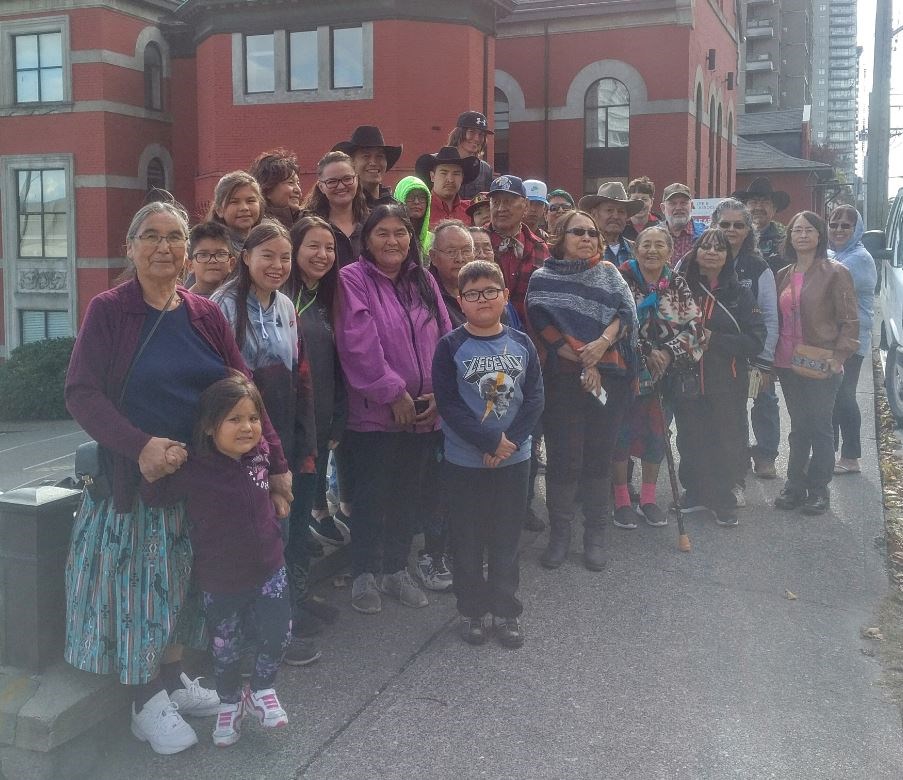A visit to the old courthouse and a former cemetery site in New Westminster was an emotional day for members of the Xeni Gwet-in First Nation.
Xeni Gwet-in First Nation is one of six Tsilhqot’in communities that make up the Tsilhqot’in Nation. Tsilhqot’in Chief Ahan was executed in New Westminster in 1865, but it’s unclear where he was buried, with locations near the old courthouse in downtown New Westminster and a former cemetery on the high school sites being considered potential sites.
“It was emotional,” said Coun. Chuck Puchmayr, who recently accompanied the visitors to the both sites. “It was very powerful.”
The visitors intend to visit New Westminster again on July 18, 2019, which will be the 154th anniversary of Ahan’s execution in New Westminster. Ahan was one of six Tsilhqot’in chiefs sentenced to hang for their roles in the Chilcotin War.
“He was a hero. All of the six chiefs were heroes,” Puchmayr said. “They were defending their land.”
In March, Prime Minister Justin Trudeau issued an apology on behalf of the federal government, saying the six chiefs were leaders of a nation and were acting in accordance with their laws and traditions. That followed a 2014 apology by then B.C. Premier Christy Clark for the “wrongful” executions of leaders who were “engaged in a territorial dispute to defend their lands and their peoples.”
Puchmayr, who has spearheaded efforts to create a sister community relationship between the City of New Westminster and the Tl-etinqox government, has been invited to witness Trudeau’s visit of their declared title lands in November. It will be the first time in Canadian history that the prime minister will meet with the people and address the wrongs that were made during the Chilcotin War of 1864/65.
When meeting with the Xeni-Gwet-in delegation, Puchmayr showed them maps from the city’s archives that showed the new high school isn’t being built on land once home to a cemetery. Xeni-Gwet-in Chief Jimmy Lulua, who was among those who visited New Westminster, expressed a desire to be part of a local committee that will be discussing ways of honouring and memorializing the cemetery site.
While visiting the site of the old courthouse on Carnarvon Street, talk turned to the presence of the Judge Begbie statue in front of today’s courthouse. Begbie had presided over the murder trial of five of the Tsilhqot’in chiefs who were found guilty and sentenced to hang in 1864.
“We were standing in front of the old courthouse, and Judge Begbie’s statute was right behind us,” Puchmayr said. “Some believe Begbie should be there as a reminder, but there should also be recognition of Ahan. Most of the Tsilhqot’in people think that the statue should be taken down, just like the Law Society did in Vancouver when they took the Begbie statue down.”



